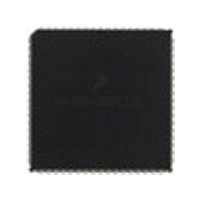MC68HC711KS2CFN3 Freescale Semiconductor, MC68HC711KS2CFN3 Datasheet - Page 238

MC68HC711KS2CFN3
Manufacturer Part Number
MC68HC711KS2CFN3
Description
Manufacturer
Freescale Semiconductor
Datasheet
1.MC68HC711KS2CFN3.pdf
(290 pages)
Specifications of MC68HC711KS2CFN3
Cpu Family
HC11
Device Core Size
8b
Frequency (max)
4MHz
Interface Type
SCI/SPI
Program Memory Type
ROM
Program Memory Size
32KB
Total Internal Ram Size
1KB
# I/os (max)
51
Number Of Timers - General Purpose
8
Operating Supply Voltage (typ)
5V
Operating Supply Voltage (max)
5.5V
Operating Supply Voltage (min)
4.5V
On-chip Adc
8-chx8-bit
Instruction Set Architecture
CISC
Operating Temp Range
-40C to 85C
Operating Temperature Classification
Industrial
Mounting
Surface Mount
Pin Count
68
Package Type
PLCC
Lead Free Status / Rohs Status
Not Compliant
Available stocks
Company
Part Number
Manufacturer
Quantity
Price
Company:
Part Number:
MC68HC711KS2CFN3
Manufacturer:
NSC
Quantity:
1 001
- Current page: 238 of 290
- Download datasheet (4Mb)
Memory Expansion and Chip Selects
11.4 Chip Selects
Technical Data
238
The M68HC11K Family microcontrollers contain a set of four
software-configured chip select signals which can reduce the amount of
external glue logic needed to interface the MCU to external devices in
the memory map. Each chip select signal is asserted when the CPU
accesses a memory location in its designated range, which is
determined by writes to control registers. Polarity of most chip-select
signals is programmable, as well as the segment of the address cycle
during which the signal is asserted (high E clock or address valid). Some
chip-select signals can be programmed to drive each other as well as
their own designated sections of memory (see
Driving
is asserted can be “stretched” up to three clock cycles (see
Stretching).
The four chip-select signals operate only in expanded modes. The
program chip select (CSPROG) is used to enable external memory in
the 64-Kbyte memory map that contains the reset vectors and program.
The chip select for I/O (CSIO) operates only within the first eight Kbytes
of the memory map. The two general-purpose chip selects, CSGP1 and
CSGP2, can enable devices anywhere in the 1-Mbyte expanded
memory space. Any port H pins 4-7 that are not used for chip-select
functions can serve as GPIO pins.
The six chip select control registers are:
Table 11-4
•
•
•
Freescale Semiconductor, Inc.
For More Information On This Product,
CSCTL enables and controls most of the features in CSPROG
and CSIO.
GPCS1A, GPCS1C, GPCS2A, and GPCS2C define most of the
operations of the two general-purpose chip selects.
CSCSTR controls clock stretching for all four signals.
Another), and the bus cycle during which any chip-select signal
Memory Expansion and Chip Selects
summarizes the controls for each of the chip-select signals.
Go to: www.freescale.com
11.4.4 One Chip Select
M68HC11K Family
11.4.5 Clock
MOTOROLA
Related parts for MC68HC711KS2CFN3
Image
Part Number
Description
Manufacturer
Datasheet
Request
R

Part Number:
Description:
APPENDIX A ELECTRICAL CHARACTERISTICS
Manufacturer:
FREESCALE [Freescale Semiconductor, Inc]
Datasheet:
Part Number:
Description:
Manufacturer:
Freescale Semiconductor, Inc
Datasheet:
Part Number:
Description:
Manufacturer:
Freescale Semiconductor, Inc
Datasheet:
Part Number:
Description:
Manufacturer:
Freescale Semiconductor, Inc
Datasheet:
Part Number:
Description:
Manufacturer:
Freescale Semiconductor, Inc
Datasheet:
Part Number:
Description:
Manufacturer:
Freescale Semiconductor, Inc
Datasheet:
Part Number:
Description:
Manufacturer:
Freescale Semiconductor, Inc
Datasheet:
Part Number:
Description:
Manufacturer:
Freescale Semiconductor, Inc
Datasheet:
Part Number:
Description:
Manufacturer:
Freescale Semiconductor, Inc
Datasheet:
Part Number:
Description:
Manufacturer:
Freescale Semiconductor, Inc
Datasheet:
Part Number:
Description:
Manufacturer:
Freescale Semiconductor, Inc
Datasheet:
Part Number:
Description:
Manufacturer:
Freescale Semiconductor, Inc
Datasheet:
Part Number:
Description:
Manufacturer:
Freescale Semiconductor, Inc
Datasheet:
Part Number:
Description:
Manufacturer:
Freescale Semiconductor, Inc
Datasheet:
Part Number:
Description:
Manufacturer:
Freescale Semiconductor, Inc
Datasheet:











